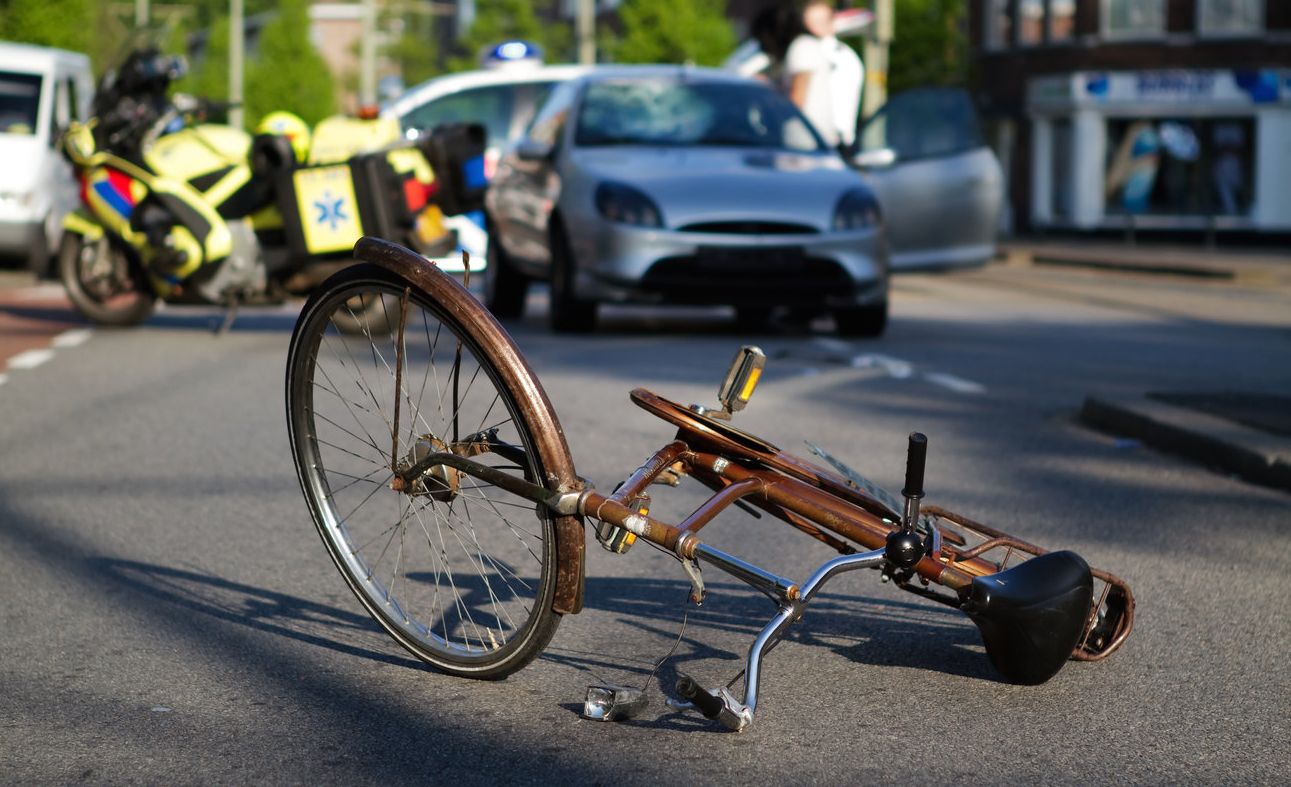Biking has a lot going for it. You save gas, get a little exercise in, and can enjoy the fresh air and beauty all around you. If you are hit by a motorist, however, all those benefits can be dashed. The physical, financial, and emotional losses you experience as a result of being injured in a bike accident can be difficult to take in and adequately process in the hours and early days following the crash. Because recovering your full range of damages is likely critical to your ability to fully heal, working closely with an experienced Killeen personal injury attorney from the outset is in your best interest.
The Bike Accident
Seeing a massive vehicle coming toward you on the road – if you see it at all – is terrifying, and the physical and emotional pain and suffering you endure can be overwhelming. The fact is that when you are on your bike, you lack the physical buffer that a car or another kind of vehicle provides. It does not help that you are more difficult to see when you are on your bike and that it is far easier for you to get lost in motorists’ blind spots. When you are on your bike, you are exceptionally vulnerable to the risks of the road and to the negligence of others on the road.
Texas Bike Laws
Texas has comprehensive laws that address the rights and responsibilities of cyclists.
The Rules of the Road
When you take to the road on your bike in Texas, you are responsible for following all the rules of the road, which include all the following:
Obeying all posted signs, warnings, lights, and signals
Signaling when you are preparing to turn or stop
Proceeding with caution and observing the duty of care you owe others on the road
When you are on your bike, motorists are required to yield the right-of-way to you (as applicable) – just as they are for all other vehicles with which they share the road. Further, motorists are responsible for driving safely in relation to you, which includes allowing adequate space between their vehicles and your bike.
Curbside
When you are on your bike, riding as near to the right curb as it is safe to do so (while allowing yourself an appropriate buffer) and traveling in the same direction as traffic is required. If you must take a lane of traffic for safety, however, the law affords you the right.
Hands on the Handlebars
You are required to keep at least one hand on your handlebars at all times, but it is important to recognize that you are always safer with both hands on deck (other than when you are signaling).
Signal Away
When you are on your bike, other motorists do not know what your intentions are, and you are responsible for letting them know what you plan on doing by using standard hand and arm signals.
No Passengers
It is illegal to ride your bike with more than one person per saddle. The only time it is appropriate to have more than one person on a bike is when it is a tandem bike (or you have a child safely strapped into an appropriate child seat.
Side by Side
You and another bicyclist are allowed to ride side by side – or two abreast – but only if traffic is not impeded in the process.
Light Up
When you ride after dark, you must have a white light on the front of your bike and either a red reflector or a red light at the back of your bike.
Capable Brakes
The front brakes on your bike should have a strong enough grip to make the front wheel skid (but you should never test their effectiveness while you are riding – especially when riding downhill).
Your Injuries
The injuries you suffer in a bike accident can be exceptionally severe.
Severe Bruising, Cuts, and Abrasions
The impact of a bike accident is very likely to throw you from your bike or to drag you along the road on your bike, and the damaging effects can be considerable. You can expect serious bruising, cuts, and abrasions that are highly susceptible to infection and are slow to heal, and can lead to disfiguring scars.
Burns
In the course of a bike accident, coming into contact with the heat generated by the vehicle involved can lead to serious burns. Burns are some of the most painful injuries, and they are very closely associated with serious infections, which can go as deep as the bone level. When a serious burn is on or near the face, it can leave you permanently disfigured.
Broken Bones
The impact of a bike accident can leave you with broken bones, which are exceptionally painful injuries that are slow to heal and that can lead to chronic pain and considerable losses in the range of motion. Broken and/or chipped bones in the hands and/or feet are not uncommon in bike accidents, and these injuries can slow down your recovery process (and your ability to return to work) considerably.
Traumatic Brain Injuries
While a well-fitting bike helmet can help to protect your head from the impact of a bike accident, brain injuries remain a possibility. Traumatic brain injuries (TBIs), including concussions, are serious injuries that can profoundly affect your life and future. The best way to protect yourself from a serious TBI in a bike accident remains wearing a bike helmet, which you should do every time you ride.
Spinal Cord Injuries
Spinal cord injuries can happen anywhere on your spine, and even a relatively minor spinal cord injury can leave you with serious losses in terms of the range of motion. Spinal cord injuries are also closely associated with chronic pain, and if the injury is severe and your spinal cord is severed, the outcome is permanent paralysis, which translates to a lifetime of healthcare needs and can require assistance with the activities of daily living.
Your Physical, Financial, and Emotional Losses
Your bike accident claim will need to carefully address the legal damages – or losses – that you suffer as a result of the accident.
Medical Costs
The medical expenses associated with your injuries can quickly add up to overwhelming totals, and if your injuries are quite serious, your healthcare needs are very likely to be ongoing. Some of the most common medical expenses include:
Emergency care at the scene of the bike accident and emergency transportation to the hospital
Surgical care
Hospital stays
Medical care and attention from doctors, specialists, and other medical professionals
Medical tests, procedures, and treatments
Pain management
Prescription medications
Home health care
Adaptive physical devices
Physical and/or occupational therapy
Rehabilitation
Lost Earnings
While you tend to your health and recovery, you are very likely to experience a decrease in earnings that can evolve into a decrease in earning potential (if your ability to do your job is affected). If you are not able to return to work at all, the matter is that much more serious.
Pain and Suffering
The effect that your physical and emotional suffering will have in your life is difficult to predict, but you can expect serious consequences that can be exceptionally difficult to move past. Common examples include:
Emotional lability, which can include severe mood swings and/or crying jags
Difficulty concentrating
Terrifying accident flashbacks
Sleep disturbances that can include nightmares and/or night terrors
Increased anxiety, which can also include anxiety attacks
Depressive episodes
A general decrease in engagement and/or enjoyment of life
Protecting Your Bike Accident Claim
You have been injured by someone else’s negligence in a bike accident, and protecting your bike accident claim is key. Toward this end, there are several basic steps that you can take.
Follow Your Doctor’s Instructions Carefully
The first order of business is seeking the medical treatment that you need as soon after the accident as possible. The fact is that the shock associated with the bike accident – coupled with the adrenaline coursing through you – can mask considerable pain, and you may not even recognize just how seriously injured you are. Carefully following your medical team’s instructions and advice helps to not only ensure your fullest recovery but also to bolster the veracity of your insurance claim.
Allow Your Attorney to Handle the Insurance Company
The insurance company handling your claim is paid to compensate you for your covered losses, but it is also in business to turn a profit, which means that it will do what it can to keep your settlement low. When it comes to the insurance company, keep the following in mind:
The insurance representative who contacts you is skilled at obtaining statements from claimants like you that ultimately damage their own cases. There is no requirement that you provide the insurance company with a formal statement, and this is a job that is best left to your dedicated attorney.
The insurance company is paying attention and is looking for ways to discredit your claim in one way or another. Laying low on social media, refraining from talking about your claim, and tending to your physical recovery are all excellent ways of protecting your claim from the prying eyes of the insurance company.
Do Not Be Discouraged by the Insurance Company’s Tactics
The insurance company handling your claim understands how vulnerable you are and is not averse to playing on that vulnerability. In its efforts, the insurance company may employ a variety of tactics that are designed to settle your claim for less – or to deny it altogether. Do not let these antics discourage you or persuade you to accept less than you are entitled to. If the insurance company refuses to engage in fair dealings, the law will ultimately determine the amount of compensation to which you are entitled – and your knowledgeable personal injury attorney will skillfully advocate for your legal rights and your rightful compensation.
Outright Denial
The insurance company may deny your claim outright – preying on your vulnerability and hoping that you will simply give up. You have the right to fight for just compensation, and your personal injury attorney will help you do just that.
Early Settlement Offer
Another trick the insurance company may try is coming back with a speedy settlement offer before you have a solid understanding of your total damages. While such an offer can feel like a lifeline at the moment, it can prove disastrously inadequate as time progresses. Signing off on a settlement before you have discussed the matter with your attorney is not in your best interest.
Dragging out the Process
The insurance company can get a lot of mileage out of simply dragging out the already lengthy and complicated claims process. The longer it makes claimants wait, the more likely they are to settle for less.
Casting Doubt on Your Claim
The insurance company can also call the seriousness of your damages into question (in an attempt to decrease your overall settlement). This is where taking your medical care seriously, limiting your social media presence, and allowing your attorney to negotiate on your behalf is going to serve you well.
Deflecting Blame
The insurance company may attempt to direct fault in the bike accident claim away from its policyholder (the at-fault party who left you injured) and toward you. Fault in your claim will be determined by the relevant evidence, which your bike accident attorney will skillfully compile in the creation of your strongest claim.
An Experienced Killeen Bike Accident Attorney Is on Your Side and Standing by to Help
Brett Pritchard at The Law Office of Brett H. Pritchard – proudly serving Killeen, Texas – is a seasoned bike accident attorney who dedicates his impressive practice to helping clients like you prevail with optimal case outcomes that reflect their full array of damages. We are here for you, so please do not wait to contact us online or call us at 254-501-4040 for more information today.
RELATED READINGS:







